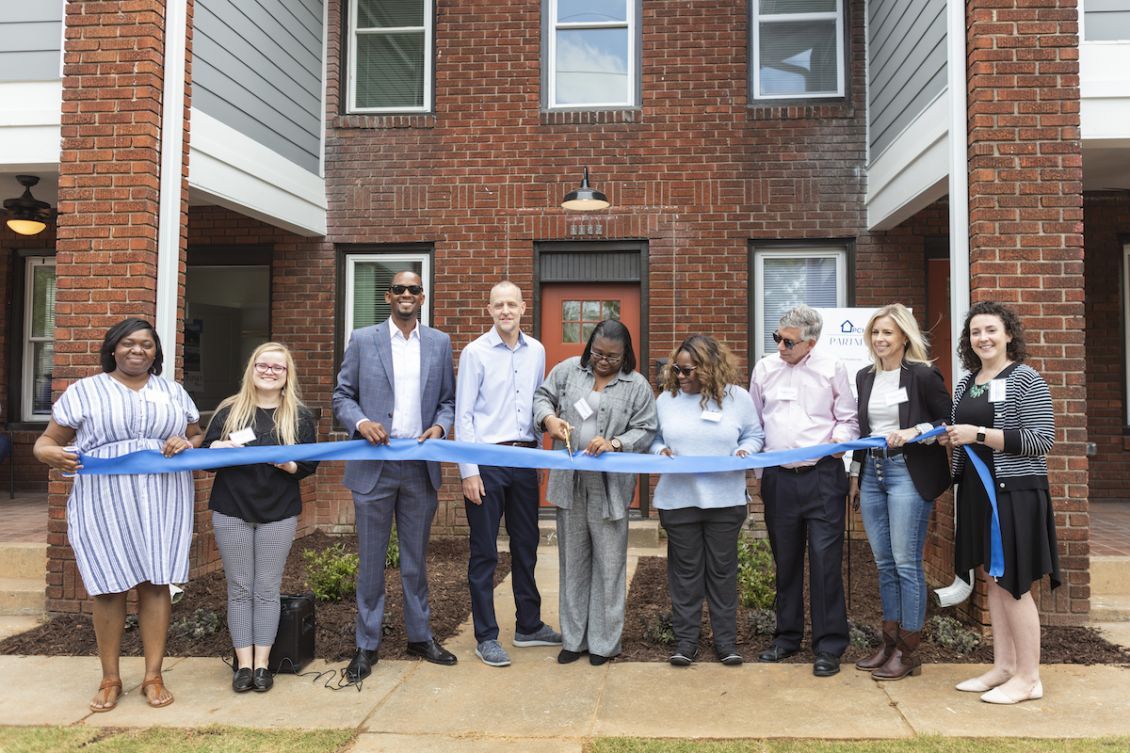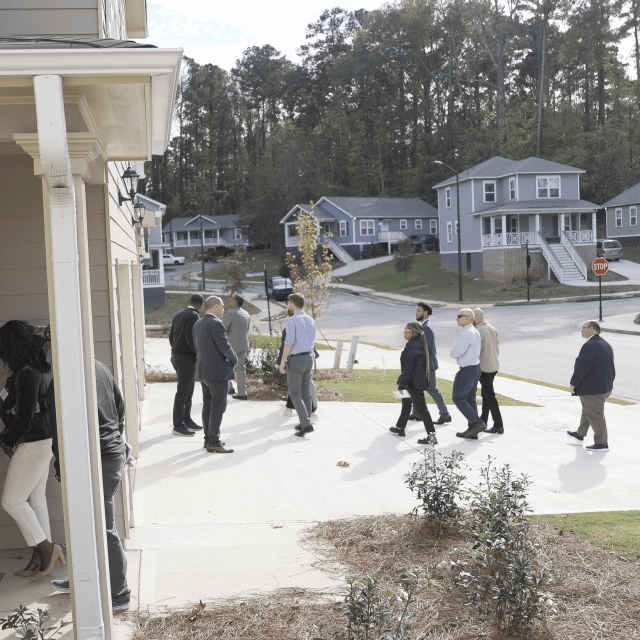Clayton Davis, chief executive officer of the Andrew P. Stewart Center, speaks about the center's history, current work, and future plans in Atlanta's neighborhoods.
Tell us about the work that you do at The Andrew P. Stewart Center.
For over 100 years, the Stewart Center has served Atlanta neighborhoods through a variety of place-based resources. The center is currently committed to the Pittsburgh community of Southwest Atlanta. Our organization works with local partners and residents to implement a community development strategy built on educational initiatives, wellness resources, and sustainable housing solutions.
The center’s affordable housing initiative was established to support families with children in our after-school and summer camp programs. All residents have access to the center’s support services — residents can partner with a financial coach, participate in the wellness cooperative, and attend workshops on homeownership, mental & emotional health, and money management.
Pittsburgh Community Housing (PCH), the Stewart Center’s housing subsidiary, has created and preserved 20 affordable homes since its inception in 2015. The center’s portfolio currently contains 14 single-family homes and five apartments. All single-family homes are made available to residents through lease-purchase agreements. The average household income of current PCH residents is 43% of the area median income (AMI).
The Stewart Center exists to see our neighbors living purposeful lives in pursuit of their full potential. The organization has made a commitment to direct all of its resources in partnership with Pittsburgh residents to help transform the community into a place of hope and opportunity for all residents.
How are Section 4 capacity building funds used at your organization? What do you hope to accomplish when this project is complete?
Section 4 funds reduce Pittsburgh Community Housing’s reliance on the Stewart Center and help PCH move toward sustainability. Funds provide compensation for staff and consultants working to advance the creation and preservation of affordable housing in our community.
The most recently approved Section 4 funding will provide predevelopment support for the creation of a 30-plus unit apartment complex targeting residents with incomes between 30%-50% AMI.
How have the last two to three years challenged you? What has been the hardest part of the experience for the center? For your service population?
Many of the Stewart Center’s enrichment programs — after-school, summer camp, and wellness cooperative — were significantly impacted by the pandemic. It was difficult to engage children and families through traditional service models.
Housing development continued without much interruption but maintenance and resident engagement were difficult to sustain.
What have you learned in this unique and challenging time? Will you make any permanent changes?
The past few years have highlighted the need to build and maintain a flexible service model. Thanks to partnerships with long-time funders and undesignated funds, the center was able to shift its services to address the changing needs of our neighbors, during and after the pandemic.
Hopefully, we will not experience another upheaval like the pandemic, but the experiences of the past few years have taught us that life in the community is always changing. The center must continue to evolve to support residents as they encounter new challenges.
What do you think will change about affordable housing over the next five years? How are you excited about the Andrew P. Stewart Center impacting that change?
I am hopeful that affordable housing in Atlanta will receive greater support from the philanthropic community. We cannot finance our way to 30%-40% AMI housing. We need larger gifts and investments from traditional philanthropy.
I am also hopeful that nonprofits and government can build creative partnerships to produce housing that meets the needs of current residents. This likely involves investing in smaller-scale and/or scatter-site projects as opposed to concentrating on single-site developments.
What else should people know about the Andrew P. Stewart Center? What makes it unique?
I tell people all the time that the Stewart Center is not a housing organization, we’re a people organization. We got involved with housing development to support our neighbors and strengthen our specific community.
It is likely that we will continue affordable housing development for years to come but we must remain committed to following the community’s lead and evolving to meet the needs of an unknown future.

